The next few weeks will see many kids from my area on vacation. New York state kids just finished, Vermont kids are at the beginning of their winter break. These two weeks are always busy at the bookstore with folks stocking up on vacation reading and activities for travel.
I’ve noticed a trend this year: parents are buying “beach reading”, the books thought of as easier or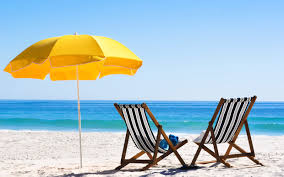 somewhat more entertaining reads than they would normally read. I totally understand the allure of the beach read: they’re fun, oftentimes racier than your book group picks, and they don’t require too much brain power so you can just pick up your book with your afternoon umbrella drink and not miss much. Non-fiction readers might be drawn to police procedurals on holiday, etc. Kids seem to be pressured into buying books that are a stretch, not books that are necessarily fun. I’m not sure this is fair. Why are the children being held to a higher standard than their parents?
somewhat more entertaining reads than they would normally read. I totally understand the allure of the beach read: they’re fun, oftentimes racier than your book group picks, and they don’t require too much brain power so you can just pick up your book with your afternoon umbrella drink and not miss much. Non-fiction readers might be drawn to police procedurals on holiday, etc. Kids seem to be pressured into buying books that are a stretch, not books that are necessarily fun. I’m not sure this is fair. Why are the children being held to a higher standard than their parents?
Sadly, I think it’s because parents are fearful that kids shouldn’t read things that are easy because then they’re not reading on or above grade level. Reading sometimes seems to be all about challenge and less about enjoyment. Do not misunderstand me: I think all readers should try to stretch themselves, but sometimes, just as adults do, kids might benefit from some potato chip reading as well. There is something to be learned from all kinds of reading, and kids, just like adults, like to revisit old friends by rereading or by going down a level or two. And reading levels won’t plummet if a kid rereads a favorite book from last year. Kids are challenged all day at school with so many things that sometimes it makes sense to let them take a break and read something that’s either just plain silly fun or comforting, even if it’s an easy read.
So, if you’re lucky enough to go holiday, what are you and your kids going to pack to read?
Untold Fairy Tales at the Art Supply Store
Elizabeth Bluemle - February 21, 2014
The only kind of retail store I would want to open besides a bookstore is a stationery /art supply store. I have a huge weakness for thick, toothy paper and glass pots of ink, tidy rainbow displays of colored pencils and watercolors, a wide array of acrylics and oils and watercolors and brushes, left-handed nibs and microscopically fine pens, soft piles of handmade papers hanging over dowels, and all of those delicious sketch pads, waiting to be filled. Plus, goache.
What I wasn’t expecting when I wandered into the Artists’ Medium store in Williston, Vt., was to find, well, art. Especially art that made my children’s book lover’s heart beat. There was a table filled with delicate, sometimes haunting prints that hinted at stories untold, fairy tales and legends just waiting for the right words. The artist was listed as Polanshek of the Hills.
I picked up three of the prints, two for gifts and one to keep. As I checked out, the young staffer at the counter ringing up another customer glanced down at my purchases and said, “Hey, thanks.”
“Are these yours?” I asked, surprised.
“Yes,” she said.
“I pictured you older,” I confessed. She was all of, perhaps, 23.
“Most people do. Especially because I go by Polanshek of the Hills. They usually think I’m a guy.”
Truth be told, I had actually pictured the artist as a woman in her 40’s, someone with a rich north woods life, maybe someone with a wool poncho and sensible, muddy boots outside her studio in the forest. Instead, she looks like a student. She probably is one.
I told her how much I liked her artwork, how it evoked fairy tales I hadn’t yet read. Her birds hold conversations. Her mice and deer are wrapped in mysterious, decorative capes, or cocoons, in a series of images she calls the “Quilted Forest.” I want to see Jess Polanshek’s work in a picture book, or an illustrated novel. She is just beginning her artistic career, and is already so talented.
It turns out that Jess Polanshek HAS illustrated a children’s book, Edward Saves the Forest (available on her website, published via Createspace). It is lovely, but uses a simpler, less detailed illustration style than the work of hers that so arrests me.
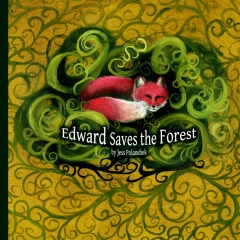
What a delight to wander into an art supply store and discover a young person with so much artistic promise. I can’t wait to see where her art takes her. And I’ll get to pick up some watercolor paper, Rapidograph cleaner, and size 2 brushes at the same time.
Flying Pig 1, Amazon 0
Josie Leavitt - February 20, 2014
We have been struggling for the past few years to win back a library account at one of the local senior living communities, Robin Bay. They had been doing their book buying from us from our very early days in the late 1990s through about 2006. We had noticed that the orders were getting smaller and smaller until they just stopped outright. I finally got the courage to ask the acquisitions person what was going on.
She was sheepish, but I assured her it was important for us to know why they left, so we could work hard to get them back. As the library budget tightened and the seniors’ ease with computers increased, they shifted most of their purchasing to Amazon. We were disheartened, to say the least. There was little we could in the face of the library getting upwards of 46% off the mostly bestsellers they were buying. Every year we talked about indies and why they’re good for communities and enrich lives. How we collect and pay sales tax, how more of the money spent in our store (.68 cents versus .32 cents) stays in our community. They were having none of it.
Every couple of months or so, we’d be giving them a booklist and asked to research prices. We’d diligently do the work and then not hear back. And after pricing the list on Amazon, we saw why. The discounts that they were offering were just absurdly low. Hardcovers that retail for $28 being sold for $12. I can’t get better prices from the publishers. So, we stopped fighting and went back to selling books to other people. And a strange thing happened.
We started doing more business with residents of Robin Bay than ever before. We delivered a lot to those who no longer drove. We welcome their van to our store twice a month with eager book buyers. Then several longtime customers moved into Robin Bay and suddenly we had a cheerleading section. And that’s all it took. Once people who really knew us and how much we cared not only about books but about them, we were given a chance to compete with Amazon on 38 books.
We got creamed by their discounts on about 25 books, came in better on seven, and were within in cents of each other on the remainder. All told Amazon was about $100 less than we could do. They chose us, because as Julie, the acquisitions librarian said, “It matters what happens in our town and we are all part of it. And this is a small price to pay for backing up what we say do: shop local.”
We are thankful for the order and will deliver it Friday when it all comes in.
When Customers Sell Books
Josie Leavitt - February 18, 2014
Overhearing customers talk about books at the bookstore is often the best part of my day. From little kids who shout out to each other, “Read the one about the rabbit!” to adults who start chatting about favorite authors and hold impromptu book groups in the aisle, there is something so lovely about this kind of sharing.
Nothing sells books better than passion. When customers are moved enough to converse with strangers at the store about a book, people tend to listen and buy what they’ve just been talking about. Yesterday, a very good customer came in and saw a family in the picture book section. She went right over to them and asked, “Have you seen this book, Journey? Follow the red and purple throughout the book. It’s simply tremendous. It would be great for your little girl.” And she walked away after handing them the book.
They thanked her and continued browsing for a birthday present for someone else in the family, leaving the little girl to her own devices. I was shelving in that area and was very interested to see what the girl would do. After all, I’m sure it’s not every day that a total stranger starts talking to her about books. She came in the store boisterously, but she got quieter and quieter.
The little girl was very curious and started poring over the book. She sat on the carpet absolutely riveted. Her mom and grandmother looked on as if something magical had happened.
And it had.
Please Bring Back Crinkleroot!
Elizabeth Bluemle - February 14, 2014
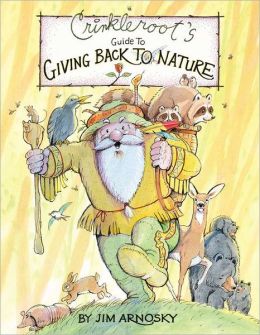
The other day, a customer came in to pick up a book she’d ordered. To my delight, it was a recent (2012) release of a book by Jim Arnosky, Crinkleroot’s Guide to Giving Back to Nature, one of only two Crinkleroot titles still available. The Crinkleroot books were staples at our bookstore when we opened and for several years thereafter. When they went out of print, our customers complained vocally. These nature books had a unique approach and appealed to so many people; children, teachers, and parents gobbled them up.
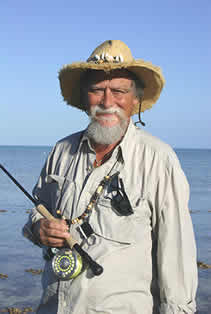
(from www.jimarnosky.com) We met Mr. Arnosky once, many years ago. He does look a bit like his character, Crinkleroot!
Jim Arnosky has contributed scores of fabulous books to the world that introduce young and elementary-school-aged children to nature, lots of which are still in print. Even though many beautiful Arnosky books are available, I also really want Crinkleroot back, too. That bearded guide took kids into swamps and forests and deserts, and taught them about the changes that happen in the natural world as seasons dramatically shift. The Crinkleroot books provided perfect beginning portals to learning about birds and mammals and fish, animal tracks and trees and so much more—fourteen titles in all. I still haven’t found ideal substitutes for Crinkleroot’s 25 Birds Every Child Should Know and Crinkleroot’s 25 Fish Every Child Should Know. Drives me crazy.
You know those beautiful little stores or restaurants you love, that are gems? And how sad and helpless you feel when they close, and how, years later, you still feel a pang every time you have a hankering to visit that place? That’s how my customers (and I) feel about the Crinkleroot books.
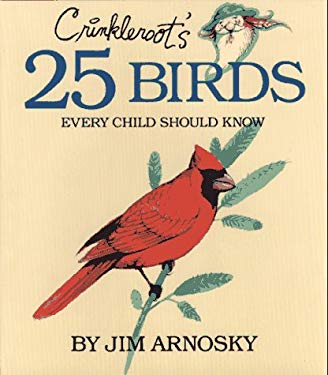
After all, these are award-winning books by a nature expert. From his website: Jim Arnosky “has written and illustrated 132 books on nature subjects and has illustrated 46 other books written by various authors. … He has been awarded the Christopher Medal, Orbis Pictus Honor, ALA Gordon Award, and Outstanding Science book awards from National Science Teachers Associations.” Come on. If nothing else, doesn’t that just scream Common Core?
I am grateful that Crinkleroot’s Guide to Giving Back to Nature is in print. Now, pretty pretty please, Putnam or Simon & Schuster or another enterprising nonfiction publisher, consider bringing back the others. Perhaps combining the Birds/Fish/Mammals/Other Animals volumes together, and doing something similar with the habitat books? And the tracking books? A set of four or five Crinkleroot volumes that hold all 14 titles within their pages would be lovely. Just saying.
Because I know Crinkleroot would be able to tell me, with just the right amount of detail, no more and no less, exactly how the woodland creatures of the northern forests are waiting out this snowfall.
Bookselling in Bad Weather
Josie Leavitt - February 13, 2014
As much of the country seems gripped in an unusually bad winter, I am reminded how bookstores are havens from the storm. Whether it’s a snowstorm, icy roads, flood, or even just a bad thunderstorm, bookstores tend to be the place where folks gather for information, commiseration and how-to books. Weather is something we all have in common, and if you’re in New England, it’s something that gets talked constantly, although I’m sure every region spends just as much time chatting about it as we do. I’m fairly certain people in the South have been talking about ice for weeks now.
Bad weather binds us together. I love a big snowstorm when brave folks stop at the store on their way home to stock up on books just as they do with milk, eggs and butter. Storms and the thought of getting snowed in make people nest, and the bookstore sees many parents planning ahead for bored kids by getting a stack of new books for the family. Not only are books comforting, but they can be enormously helpful. I’ve sold a lot of science and weather books this week. Kids seem to be asking weather-related questions that are fairly hard to answer. Why is it so cold this year compared to last year? How come we’ve had so little snow? Kids ask good questions that are often stumpers. They want to understand things like climate change (if they’re older, although younger and younger kids seem to ponder this as well) and why it can rain in December when it’s 30 degrees.
Every interaction with customers during a weather event pretty much begins with gathering news from outside. I will always ask: How is out there? Are the roads okay? What have you heard? The downside of this is by the end of the day I am just about ready to shoot myself if I hear one more word about the wind-chill. But I still ask the questions because I love hearing news about what it’s doing outside. Yes, I can look out the window. Heck, I can even go out (but why would I?) and see for myself, but hearing from someone who has just been on the road is like talking to an advance scout. As a store owner, I need to know how the roads are. I never want any staffer to stay longer at the store than is safe. Everyone needs to get home in one piece and not have it be a harrowing experience. Yes, the bookstore is important, but I’m a fan of closing if being open just increases someone’s chances of driving off the road. After the weather clears people stream in if they’ve been cooped up for awhile. They shake snow off their boots and seek the comfort of their favorite section. Sometimes, especially at the old location in Charlotte, people would cross country ski or snow shoe to the store. People share stories: I lost power for two days, my plow guy got stuck, a tree almost fell on the house, etc. Kids in scratchy snow pants stream in, shedding clothes in various sections as they start to overheat.
One of my favorite things about the bad weather are the traditions, often book-related, that families have during bad weather: reading The Wind in the Willows, or The Long Winter or having a whole-family read aloud by flashlight. And honestly, what is more cozy than curling up with a great book, a hot chocolate being surrounded by the people you love?
Kids Read the Darndest Things….
Elizabeth Bluemle - February 11, 2014

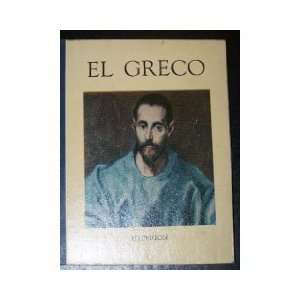
Tracey Campbell Pearson thinks her beloved lost book (which had a cover like this) might have been from the Hyperion Miniature Art Book Series, published in the late 1940’s or 1950’s.
My own nephew, as a little guy, was predictably fond of books about trucks and construction sites and other typically popular young-boy fare. But for his fifth birthday, he didn’t want a celebration featuring construction vehicles or pirates or ninjas or superheroes. Instead, he insisted on hosting an Andy Goldsworthy party. He’d become fascinated with the artist’s outdoor constructions in a book on his moms’ coffee table, which led them to the fabulous Rivers and Tides documentary about Goldsworthy’s work. So — in late February, in snowy cold Vermont — a bunch of little boys and girls bundled up in snowsuits and mittens and went out into the backyard to make snow and ice structures. It was pretty great.

When I was a school librarian in New York City, there was a kindergartner who used to spend hours looking at old photography books of the city. He was particularly fascinated by the trains running through the city, and the layout of the streets. This boy and his dad went on walks through the city, finding and tracing remnants of long-lost train tracks. One day, Griffin was looking at a spread in one of the big old books with sepia photographs. I think it was an aerial view, but not from too high up. (I can’t remember which exact streets he identified, so they are indicated with “XX” in the following quote.) Griffin said, musing, “I think this must be the intersection of XX Avenue and XX St., because XX Avenue went in both directions back then, but XX St. was one way, and there are train tracks behind here.” We flipped to the photo credits section and sure enough, he was right. I may not remember any of the street names he mentioned, but I sure remember being astonished at his patient assessment of the photographs and his thoughtful deductive analysis.
Now, I am fairly certain that, were a customer to ask me for a great recommendation for a three-year-old, and I handed her The Art of El Greco (or, for a five-year-old, some Andy Goldsworthy or a book of old Manhattan photos), I would encounter some pretty skeptical looks. Rightly so. But the truth is, we never know what will reach into a child’s heart and soul and imagination and take root. This is why it’s so valuable and important to expose children to all kinds of books, to give them not only children’s books, but interesting books for older readers — coffee table books of art and people and far-off places — and have them in our homes, our doctors’ offices, our libraries and DMVs and everywhere little kids hang out without a lot to do — readily available. And it behooves us to do our best to get those books into homes that can’t afford them.
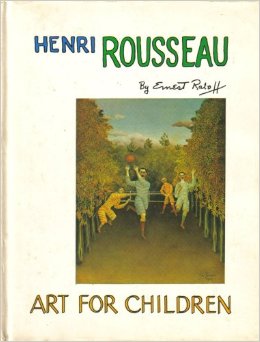 Something else I take from these anecdotes is a reminder that nonfiction is just as important for very little children as for older independent readers. I need to remember that when I’m hand selling books to parents and grandparents. I’m not sure El Greco would ever have occurred to me to recommend, but I do remember loving a wonderful children’s art book series my parents gave me one volume at a time. My favorite was the one on Henri Rousseau. I lived in its pages. (A quick Google search led me right to it: Ernest Raboff’s “Art for Children” series, once published by Doubleday, now OP. Yoo hoo, Random House!)
Something else I take from these anecdotes is a reminder that nonfiction is just as important for very little children as for older independent readers. I need to remember that when I’m hand selling books to parents and grandparents. I’m not sure El Greco would ever have occurred to me to recommend, but I do remember loving a wonderful children’s art book series my parents gave me one volume at a time. My favorite was the one on Henri Rousseau. I lived in its pages. (A quick Google search led me right to it: Ernest Raboff’s “Art for Children” series, once published by Doubleday, now OP. Yoo hoo, Random House!)
Really, it makes sense. Most children are visual creatures; there’s a reason the earliest books are picture books. Art and photography books are, after all, picture books – albeit of a different kind. They introduce children to worlds beyond their experience, both real and imaginary, sparking imagination and, perhaps, lifelong passions.
Readers, what unexpected book obsessions did you have as a child, or have you encountered with the kids in your lives?
Books vs. Screen Time
Josie Leavitt - February 9, 2014
I’ve had my store for 17 years and in that time so much has changed in how I can work. Years ago, if I wanted to run a report on my bestsellers, I’d have to do it at the bookstore. If I wanted to make and send an order, I’d have to mark up catalogs and then enter it on the computer, at the store.
Things are so different now. I got to sit at home watching the Olympics and ready my best seller report for the New York Times yesterday. I logged on to my office computer remotely and in just about the time it would take to physically run the report, I did it from home, and then uploaded to the Times site. All from the comfort of my couch. This is simultaneously, a great innovation and a horrible one. Yes, being to work from home is sometimes just wonderful. But the fact that I can work so efficiently from home sometimes makes me feel yoked to my desk at the bookstore. The ability to just log on means that work is never far away. And things that honestly can wait until I’m back at work just get done on personal time.
The same thing is happening with making orders. It was one thing to sit at home with a happy stack of catalogs and mark them up at home. For some reason, I always enjoyed that. Then I would bring in the catalogs and give them to my rep and then enter the titles on the computer. Now, with rare exception, Penguin Children’s for one, all orders are done on Edelweiss. This does one great thing: I never have to enter book information. I download and then upload a file and I’m done, and that is an enormous time saver. The downside is more screen time, a lot more. I think anyone who works in a small bookstore where they wear all the hats knows it fairly impossible to spend the day doing orders on the computer. So, what was once a fun task of looking at catalogs in the tub, has now become somewhat of a pain.
I don’t mean to whine. Okay. maybe I mean to whine a smidge. It’s just I am feeling nostalgic for the days when the work I would do at home would be to read. It’s almost as if sometimes reading feels like a luxury, like I’m hiding from what I need to get done, and that’s as sad as it is frustrating.
Yes, increased screen time is inevitable, but my promise to myself in 2014 is to spend less time in front of my computer and more time with my head in a book.
Books You’ve Read a Hundred Times?
Elizabeth Bluemle - February 7, 2014
A hundred times may be an exaggeration, but as a child, I read many of my favorite books dozens of times and more. In the bookstore, I often hear parents bemoaning their children’s repeat reading. Adults sometimes worry when kids choose an old favorite over a new discovery, but both are signs of being healthy readers. While I understand that more media are competing for children’s time, and so picking up the entire Harry Potter series every summer might take a serious chunk of hours away from other books, I still think that avid re-readers tend to be avid readers, period. And that re-reading can be a very valuable endeavor.
People re-read books for all kinds of reasons: to catch things they missed, to revisit a favorite world, to find comfort in a familiar and much-loved story. We talk about “digesting” books, and I think re-reading is part of the total absorption in a fictional or nonfiction world.
I think I did the bulk of my re-reading between the ages of 8 and 14. Charlotte’s Web by E.B. White probably tops my list, along with The Last of the Really Great Whangdoodles by Julie Andrews Edwards, Mr. Pudgins by Ruth Carlsen, The Enchanted Castle by E. Nesbit, Half Magic and Magic or Not and the rest of the seven books by Edward Eager, Magic in the Park by Ruth Chew (now back in print, hooray!), Gone-Away Lake by Elizabeth Enright, The Witch Family by Eleanor Estes, Island of the Blue Dolphins by Scott O’Dell, My Side of the Mountain by Jean Craighead George, The Phantom Tollbooth by Norton Juster (how did that not win a Newbery, by the way?!), The Book of Three by Lloyd Alexander, Mrs. Piggle-Wiggle by Betty MacDonald, The Little Prince by Antoine de Saint-Exupéry, The Wolves of Willoughby Chase and Black Hearts in Battersea by Joan Aiken, The Saturdays and the others in the series by Elizabeth Enright, A Girl Called Al by Constance C. Green, To Kill a Mockingbird by Harper Lee, A Wrinkle in Time by Madeleine L’Engle, and so many more. I also used to read the Lord of the Rings trilogy every summer, about eight years in a row. (Oddly, I never felt the desire to return to The Hobbit after a reading or two.)
Oh, I know I’m forgetting a boatload of favorites!! I’m not counting books I read two or three or even four times, but books I read ten, twenty times and more. I think I read Last of the Really Great Whangdoodles 21 times. Clearly, there was something there that kept drawing me back: the imagination, the charm, the brightness, the magic, the humor. The bedroom slippers! Mumbleumbledum. (Ahem. I’ll continue.) And Charlotte’s Web! What an endless source of inspiration, simple and profound, funny and sad, full of characters and heart and suspense and lots of love. I read a passage from The Little Prince at my mother’s memorial service, and another from Charlotte’s Web at my grandmother’s. These books became part of the fabric of my being, beats in the rhythm of my heart. I knew lines by heart, maybe even sections. Re-reading didn’t detract from my development as an eclectic reader; it provided something different, a journey I knew I wanted to embark upon yet again.
So, while I happily help kids who are in fact stuck re-reading books because they just can’t find their next great read, I also try to reassure parents, letting them know that re-reading can, in fact, be one of the hallmarks of becoming a fluent lifelong reader.
What books did you read countless times? And do you know why, or is it a bit of a mystery?
The Tipping Point for Diversity — Turning Talk into Action
Elizabeth Bluemle - February 6, 2014
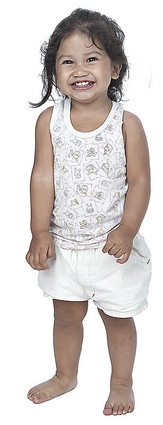 There is a terrific, impassioned conversation happening over at the CCBC (Cooperative Children’s Book Center) discussion group right now, about race and identity and representation in children’s books. In fact, I’ve noticed that this kind of conversation is happening so much more often, and in a deeper, more honest and layered way, than it ever has since I began blogging about the topic four and a half years ago. Much has changed since Where’s Ramona Quimby, Black and Pretty? and A World Full of Color (both about the paucity of diverse children’s books) and The Elephant in the Room (about the striking whiteness of the publishing business itself). What’s changed isn’t, unfortunately, the publishing-diversity landscape; it IS a little bit better, though only just a little. Statistics gathered and assessed by the CCBC folks and discussed by the Children’s Book Council Diversity Committee, among others) — remain dismally disproportionate to the real world. What has changed, though, is that awareness has grown exponentially. The conversation is happening throughout our field, and I think we are finally, finally beginning to approach what Malcolm Gladwell termed “the tipping point.” And that means that we may at long last see a more effective shift from talk into action.
There is a terrific, impassioned conversation happening over at the CCBC (Cooperative Children’s Book Center) discussion group right now, about race and identity and representation in children’s books. In fact, I’ve noticed that this kind of conversation is happening so much more often, and in a deeper, more honest and layered way, than it ever has since I began blogging about the topic four and a half years ago. Much has changed since Where’s Ramona Quimby, Black and Pretty? and A World Full of Color (both about the paucity of diverse children’s books) and The Elephant in the Room (about the striking whiteness of the publishing business itself). What’s changed isn’t, unfortunately, the publishing-diversity landscape; it IS a little bit better, though only just a little. Statistics gathered and assessed by the CCBC folks and discussed by the Children’s Book Council Diversity Committee, among others) — remain dismally disproportionate to the real world. What has changed, though, is that awareness has grown exponentially. The conversation is happening throughout our field, and I think we are finally, finally beginning to approach what Malcolm Gladwell termed “the tipping point.” And that means that we may at long last see a more effective shift from talk into action.
Even if we ignored the human need to hear and share stories that reflect our own lives and introduce us to others’, U.S. population statistics bear out the sheer economic wisdom of publishing diversity and getting past treating black and Latino and Asian and Native American and Muslim (and and and!) stories as “other.” Nearly half of the children born into this nation are not Caucasian. We need to wake up the day care centers and playgrounds all around us and provide books for all of our kids.
We also need to get more agents and editors and art directors and publishers of color into the halls of publishing, and that will only happen if kids in high schools and colleges are exposed to careers in the field. As someone said in a recent conversation at the Kindling Words writing retreat last week, “Send editors to Howard University to talk to students. Send them to high schools in the Bronx and Brooklyn. Let kids know these jobs are out there.” All too often, we make lazy assumptions, that (1) kids of color are also kids from struggling socioeconomic backgrounds, and (2) that they will therefore not want or be able to take the low-salary entry-level jobs at publishing houses. Even if the first point is true for a student, however, the second may not be. An editor participating in the Kindling Words discussion, who is herself white, pointed out that there are many white editors who came from economic backgrounds other than upper middle and upper class. This was actually news to me, and made me aware of my own assumptions here. And of course it’s true; people who are inspired and motivated work hard to find ways to take starter salaries in fields they love. We just need to let young people know about these careers.
In terms of publishing more books by writers of color and/or about children of color, there’s a lot to be done there, as well. In the picture book realm, how about not assuming white is the default race for picture books about families and friendships and other everyday joys and challenges? What an easy way to change the landscape for our children! When it comes to novels, let’s broaden our acceptance of subject matter and a variety of experiences. For example, there isn’t one African-American experience; there are as many ways of being African-American as there are of being white, and it is silly of us not to embrace that editorially.
We need to get out of the “niche” approach to publishing. Sure, not all readers will read all books, but if we market a YA romance about black characters as somehow “niche,” we do everyone a disservice. Matched would have been just as fun a read if the main character were Indian, and our job is to stop segregating books. If we lead the way for the reading public, they will come. If every jacket cover with a brown face is about racial issues, all readers, not just white readers, will suffer from issues fatigue and turn away from those covers. (More book jacket thoughts are in Who Will Create the New Normal?, a blog post I was invited to write for the CBC.) Right now, we are in a transition phase, where publishers feel they must resort to silhouettes and other ways of masking race in order to get white readers to pick up a book featuring main characters of color. I understand why this is, and I agree that it is probably true because of issues fatigue and the legacy of niche thinking, but we need to start tipping the balance now into proudly showing those nonwhite main characters on the covers, backing those books with enthusiasm and marketing dollars, and expecting readers to pick them up. I wrote about this at length for Lee & Low’s wonderful, active diversity blog in a post called True or False: Multicultural Books Don’t Sell.
The Vermont College of Fine Arts has a new scholarship for writers of color, co-sponsored by literary agent Barry Goldblatt. As described in the press release, the Angela Johnson (yay!) scholarship is “a talent-based grant for writers of color attending the MFA in Writing for Children & Young Adults Master of Fine Arts program. The $5,000 scholarship will be awarded to up to two students annually.” The release cites “the hope of helping attract more writers of color to the leading MFA program for writers of literature for young readers, coupled with the need and desire of the publishing community and readers themselves for more diversity in authorship and content….” I love that this scholarship exists and hope there are many more of them across the country!
As for ourselves, let’s take a look at our own bookshelves, at our reading and recommending and gift-giving habits. Let’s read books outside our own race and culture. Let’s give our white nephews and nieces and children and grandchildren great books featuring kids of color. If you’d like some ideas, I’m still maintaining the World Full of Color database, which boasts more than 950 children’s books (baby to YA) featuring main characters of color where race is not the driving force of the story. (Race is always a major part of identity; what I mean here is that the plot does not revolve around race, racism, intolerance, political/historical events based in racial issues, etc.) Please feel free to share this database with teachers and librarians, parents and friends, and alert me to omissions.
Let’s discover fantastic books and recommend them to each other and the world!
How else can we take meaningful action that will lead us forward to a place where we are recognizing and representing and celebrating and supporting the incredible diversity of our nation’s children? I don’t think there’s a more important, worthwhile thing we could be doing in this field.






